
© Paul Kolnik. (Click image for larger version)
New York City Ballet
Russian Seasons and Namouna, a Grand Divertissement
★★★★✰
New York, David H. Koch Theater
27 April 2017
www.nycballet.com
davidhkochtheater.com
Ratmansky Double
I still remember my feelings during the premiere of Alexei Ratmansky’s Russian Seasons at NYCB in 2006. There was a shock of recognition: this was the thing I had been looking for, and not finding, in new works for the ballet. Choreography that felt driven by stories and emotions rather than by esthetics and technique. A humanity that avoided balletic clichés – despair! romance! – and felt as mysterious and eccentric as the human heart.
Well, Russian Seasons is back, after a hiatus of 5 years, as part of an all-Ratmansky double bill in New York City Ballet’s “Here/Now Festival.” And it’s heartening to see that these qualities are still there, and still fresh, despite the fact that Ratmansky has become a ubiquitous presence on ballet stages. (I’ve been watching closely ever since, and am now working on a book about him. *) On the evidence of last night’s performance, danced by an almost completely new cast, the ballet hasn’t aged a bit. And this new cast looks as engaged and electrified by it as the first one, though one can’t help but miss some of the original players, whose personalities infused the choreography with its particular flavor. Jenifer Ringer’s dreamy, searching eyes; Wendy Whelan’s deathly, quiet, despair; Sofiane Sylve’s rage; Albert Evans’ air of malevolent mystery.

© Paul Kolnik. (Click image for larger version)
Which is not to say that the current cast doesn’t do it justice. The music, by Ukrainian composer Leonid Desyanikov, is structured as a suite, based on the Orthodox liturgical calendar, for string orchestra and female voice. Like the score, the dances are infused with a strong folk flavor, accented, full of syncopations and keening melodies. The style is a distant relative of Stravinsky’s Les Noces. Each piece creates a little “scene” – a happy harvest dance; a woman possessed by spirits; a group of moribund villagers leaning on each other for support. The flavor is definitely Russian. The dancers wear hats and long, plain dresses in solid colors. The final section, in particular, evokes a crushing folk-ish fatalism: a ghostly couple in white celebrates a joyless wedding with pas de deux filled with achingly slow, gliding lifts. The cast sings “Aleluia,” and then lies down to die.
The role of the woman in white was originally danced by Whelan. Rebecca Krohn is still finding her way into its subtle shifts in tone, but has already imbued it with a kind of heavy, passive wistfulness. Replacing an injured dancer, Sara Mearns was thrown in to her old role as the woman in red, and gave an explosive, almost dangerous performance, stomping, kicking, leaping, arms flying. Megan Fairchild – who doesn’t get enough credit for her acting abilities – looked convincingly possessed in a passage where three men, perhaps ghosts or figures of her imagination, take turns taunting and protecting her. Taylor Stanley brilliantly captured the music’s starts and stops, and sudden rhythmic shifts. This ballet is now imprinted with the company’s DNA – though it is also performed by the Bolshoi and others – and seems destined to stay in the repertory for a long time.
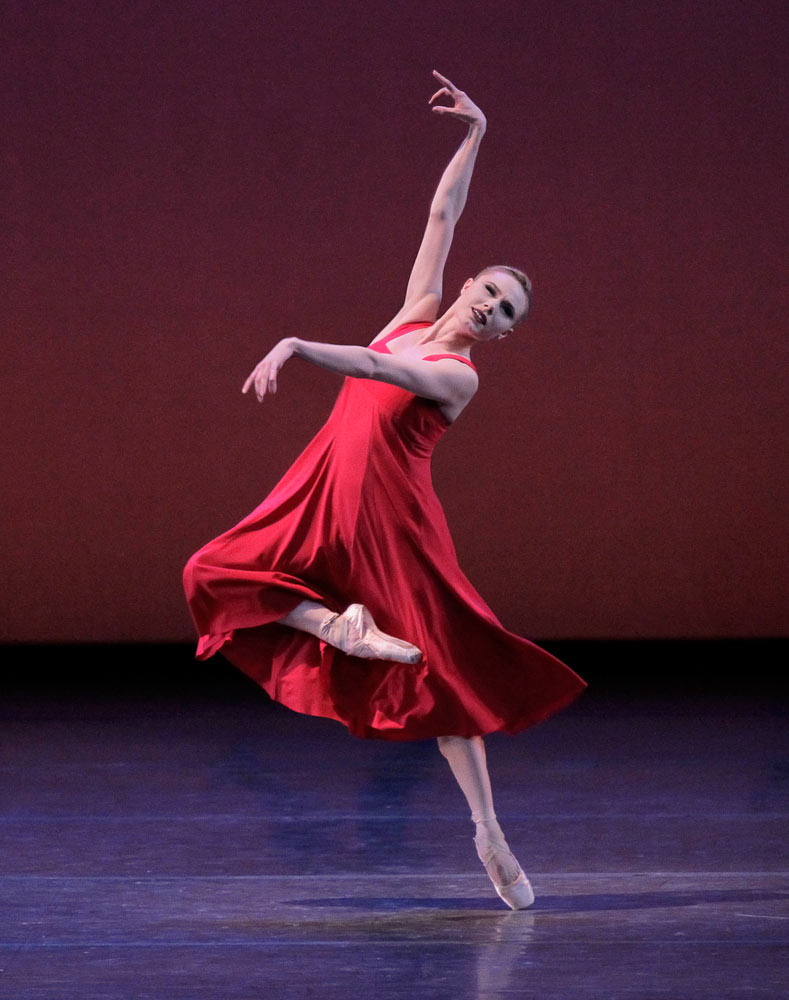
© Paul Kolnik. (Click image for larger version)
Namouna, A Grand Divertissmeent, which followed after the intermission, was made four years later. It is a completely different ballet, more ambitious in many ways, and certainly more eccentric. And yet it shares some basic qualities with the earlier work. First, the quirky sense of humor. And the way that humor is teased out of, rather than superimposed upon, the music. Secondly, the way the choreography “gets” the dancers – drawing certain qualities out of them and pushing those qualities to the limit. The strong sense of character built into each role. The full-bodied and un-pretty nature of the movement. These are qualities that divide the audience. The man sitting next to me was visibly uncomfortable; the woman in front of me kept breaking into delighted giggles.
Namouna is based on Édouard Lalo’s 1882 ballet score for the Paris Opéra, one of those exotic ballets that were popular at the time. It was set in Corfu and involved the search for a beautiful slave girl. Ratmansky jettisoned the plot, but kept the flavor and the stock characters: the joyous and innocent hero, the temptress, the pirate, the firebrand. His ballet has all the elements of a story ballet, without the actual story, though one could piece one together should one wish: a voyage to a strange land, a young man entranced by the antics of the local population, a battle, a series of encounters with mysterious women, true love, and a happy ending. All tongue in cheek, all with a twist. The weird costumes – wigs, funny tutus, pleated dresses, sailor suits – by Rustam Khamdamov, add to the surreal atmosphere.
Here, the usual nineteenth century corps de ballet becomes a flock of women dressed in long yellow dresses and wearing Louise Brooks bobs. They fly onto the stage with arms outstretched, more like airplanes than like swans. At various moments they play cymbals, bask in the sun, and rock the hero to sleep. The vixen, danced here by Ashley Bouder, smokes a cigarette (there was a cigarette dance in the original ballet, too) wile tiptoeing, tapping, shaking a leg, and hopping around on point. The hero (Tyler Angle) remains unimpressed. Later she pretends to be desperately in love with him, swooning and pleading, but that doesn’t work either. Sara Mearns – back for another riveting performance – is a rollicking gypsy, leaping with abandon, whipping her leg around in fast turns, shaking her shoulders, and finally launching into a series of bigger and bigger sissonnes (jumps from two legs), like a sort of witch. Later she returns as a Marilyn Monroe character, with a flock of men who kiss her feet, grasp at her hands, and prostrate themselves before her.
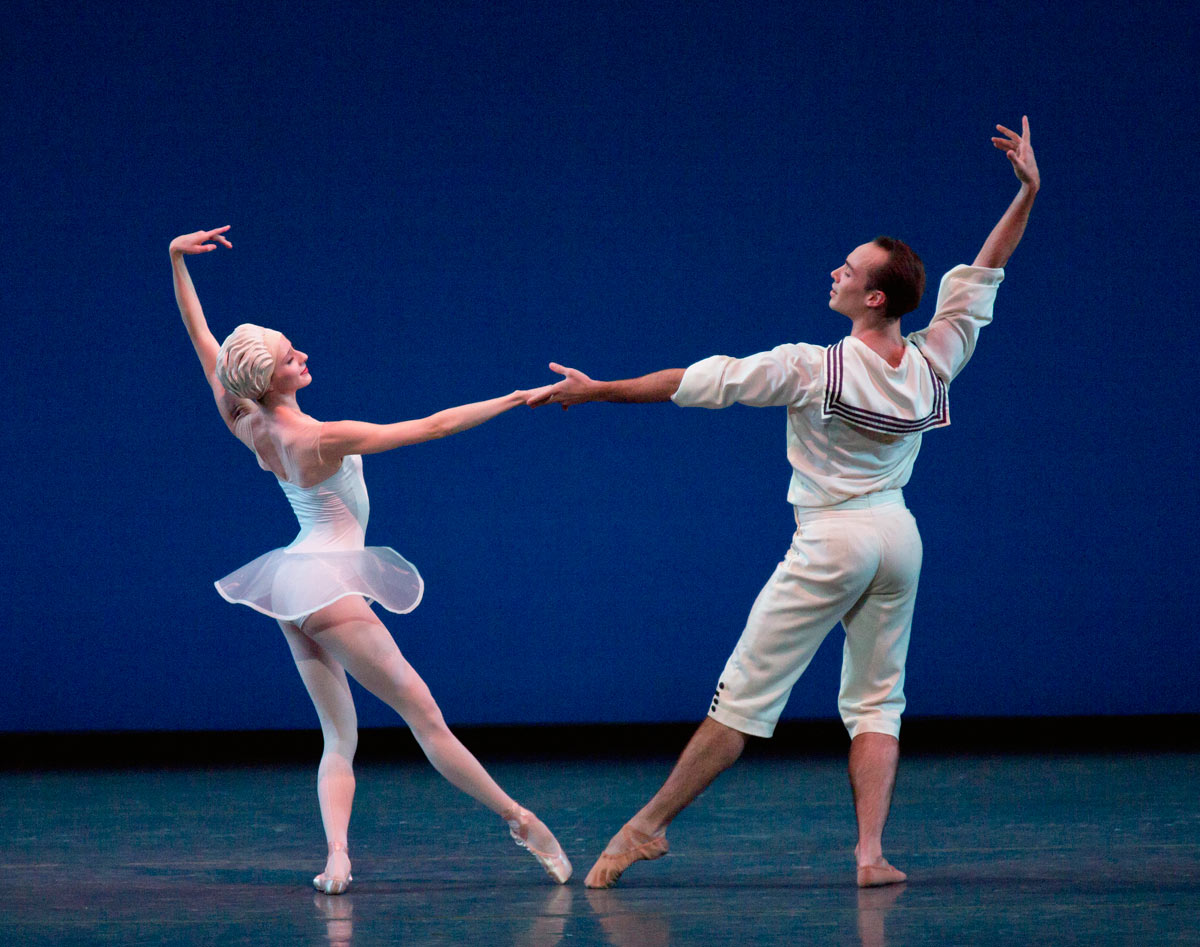
© Paul Kolnik. (Click image for larger version)
Needless to say, the hero finds his match (Sterly Hyltin), though only after a heated battle with the high-jumping and quick-moving powerhouse Daniel Ulbricht. The ballet ends, like Sleeping Beauty, with a wedding celebration. Everyone is invited, and everyone is happy. After which the bride plants a passionate kiss on her groom, taking him, and everyone else, a little bit by surprise.
Which is to say that Namouna is fun, and weird, and knowing, and clever, all at once. Last night’s performance had some rough edges, as if the ballet hadn’t received quite enough rehearsal time. (Not surprising given the hectic schedule of the festival.) Not every musical effect in the choreography was as precise as it might have been. And some of the tempi felt rather slow, particularly the overture. When the ballet premiered, the orchestra was conducted by Fayçal Karoui, who loved speed and had a talent for teasing out colors, particularly in French music. Andrew Litton, who has raised the overall quality of the music-making at New York City Ballet, hasn’t quite unlocked the magic in this particular score. Or maybe the orchestra, too, is overstretched.
But still, it was a good night at New York City Ballet. What these ballets have in spades is a vitality that illuminates them from within. They’re alive.
* Marina Harss is currently at work on a book about Alexei Ratmansky, for Farrar Straus and Giroux.









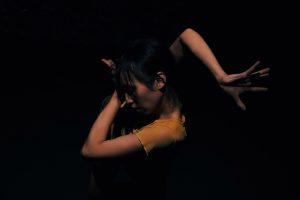
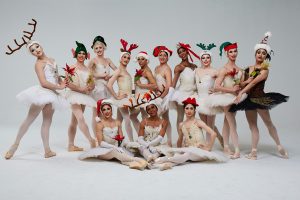


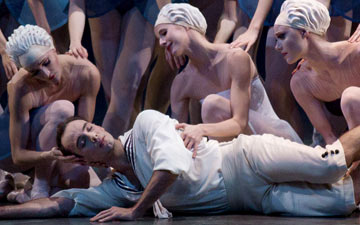

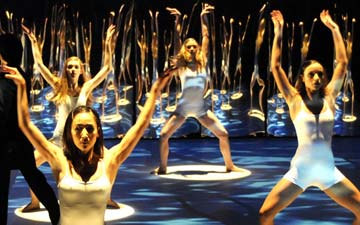
You must be logged in to post a comment.